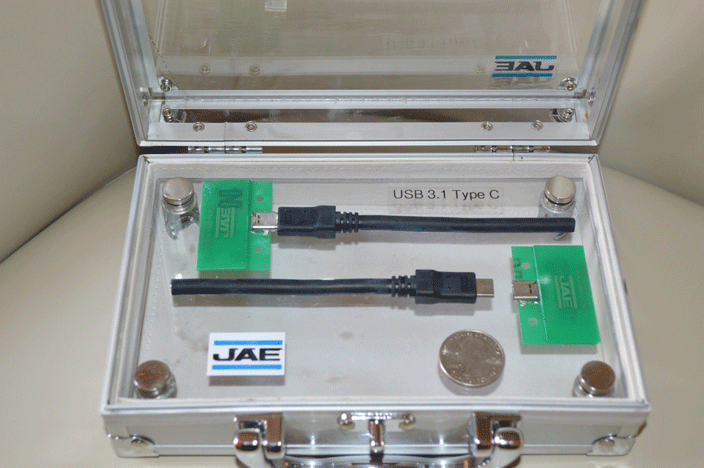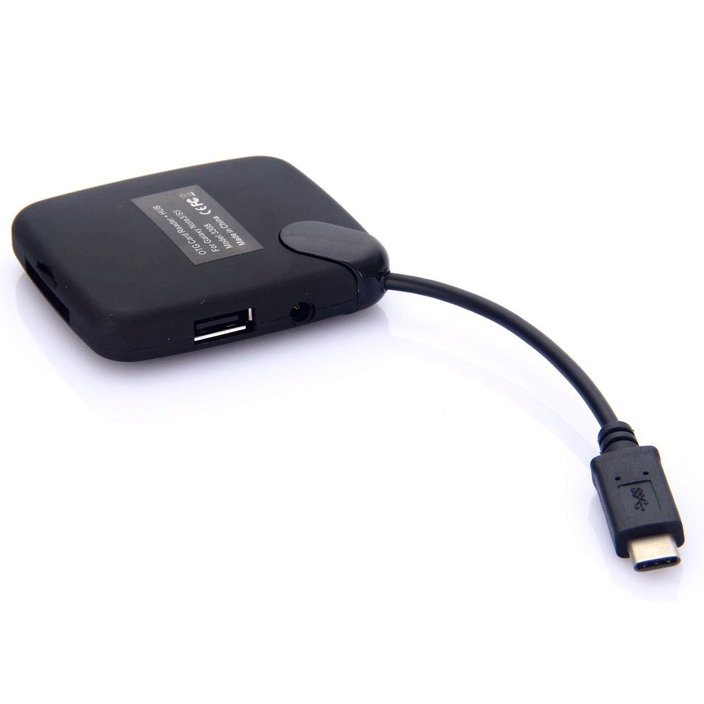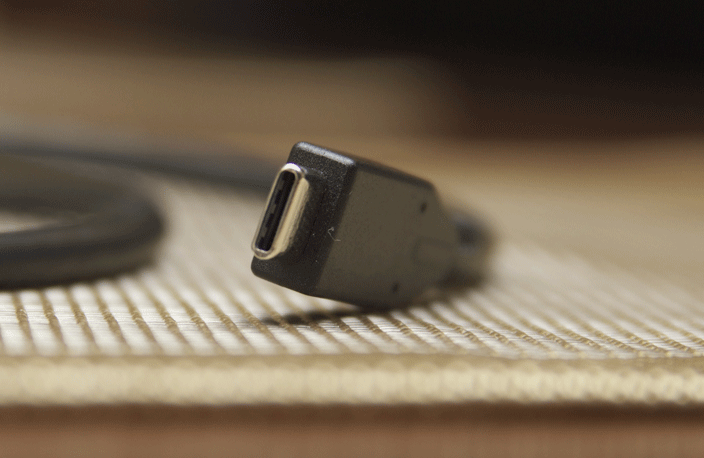The "Wonder Cable": Reversible Type-C USB Cables Can Replace Several Digital Cables

USB cables were an amazing step forward when they were first introduced in the 1990s, and it’s hard to imagine life without today’s lightning-fast USB 3.1 cables. Peripherals connected with serial and parallel cables now seem almost prehistoric.
The newest iteration of USB, Type-C, has already been celebrated for an important revision: the fact that the cables can be plugged in “upside-down” is a welcome change for all of us who’ve fought to plug in USB cables for years. But there’s a truly game-changing addition to USB with Type-C: the cables now allow the transmission of video and audio – and not just data – because of their new DisplayPort Alternate Mode capability.
Solving a Common Cable Problem
Finding the right cables to connect a monitor is often a problem. And if you have a system with two or more displays you know what a mess it can be hooking everything up, because video cards require all sorts of different cables. DVI, HDMI, DisplayPort, VGA, micro-versions of the connectors – you know the drill. It’s usually a complete nightmare.

That’s where Type-C USB cables are a godsend. Any video cards or monitors which have Type-C plugs will accept both video and audio signals carried on the USB cable (plus HDCP content protection signals), and the cable will still have room for "normal" USB 3.1 traffic at the same time. In other words, you won’t need separate cables of all different types in order to make everything work; a Type-C USB cable can handle it all. In fact, it can even carry low-voltage (5/12/20 volt) power up to 100 watts, so you might even be able to ditch the power cord in addition to eliminating HDMI or DisplayPort cables and/or adapters.
This works because of the “Alt Mode” technology that was included in the Type-C power delivery specification. The original intent was simply to allow delivery of low voltage power through the USB cable, but the "alternate" in alternate mode means the cable’s pins can be repurposed to send other types of signals through the cable, like video and audio. There are four signal lanes in the Type-C cable so, for example, two of them can be used for a 4K DisplayPort monitor while the other two are used for two-way 10 Gbps data transmissions. And even if all four lanes are used for DisplayPort signals (sufficient for a 5K monitor), the cable can still handle a slower USB 2.0 data signal.

Right now, equipment with new USB 3.1 Type C ports is slowly rolling out, but until you’ve got a new monitor, dock or other gear properly equipped, adapters for DisplayPort, DVI and HDMI are becoming more available by the day.
The Future

Within the next few years, just about all equipment should be Type-C compatible. That will make these new USB cables the only ones you’ll need, whether you’re dealing with displays, other computer peripherals, tablets or smartphones. And even though it’s likely that future iterations of USB will support transmissions higher than 10 Gbps, it’s expected that Type-C cables (or future, backward compatible versions) will be the connection standard for some time to come.
All that – and you don’t even have to figure out which way to flip the USB connector in order to plug it in!



